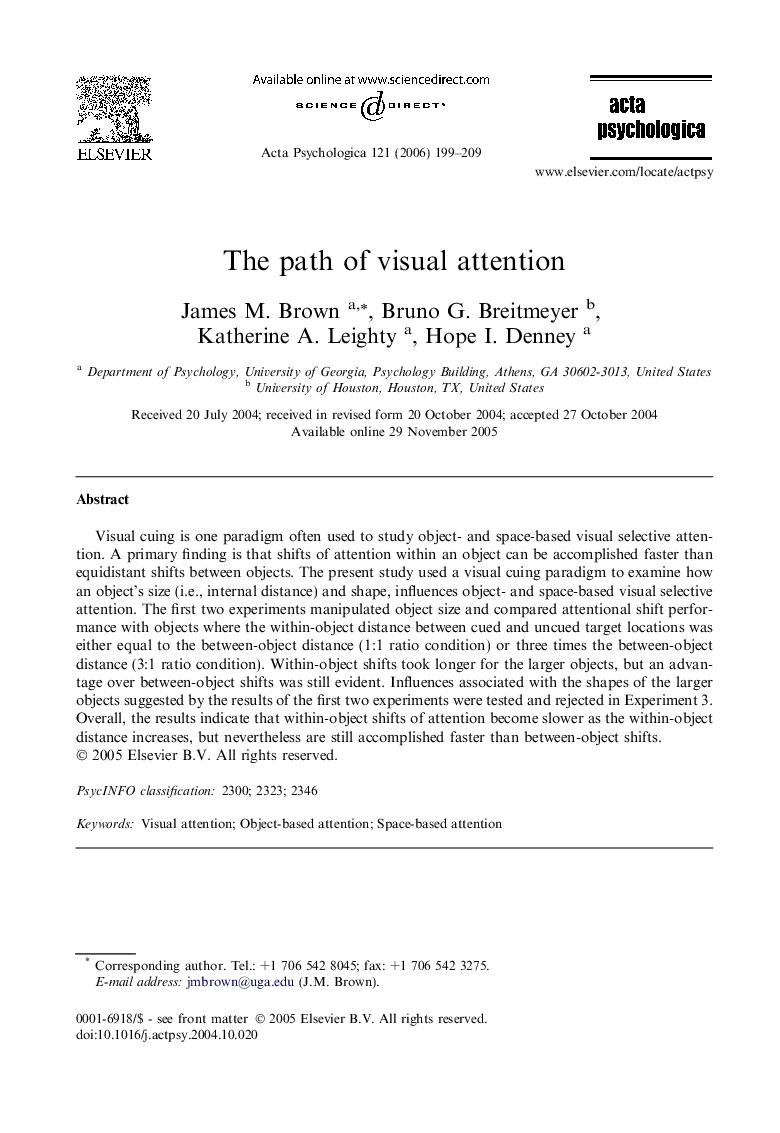| Article ID | Journal | Published Year | Pages | File Type |
|---|---|---|---|---|
| 920648 | Acta Psychologica | 2006 | 11 Pages |
Visual cuing is one paradigm often used to study object- and space-based visual selective attention. A primary finding is that shifts of attention within an object can be accomplished faster than equidistant shifts between objects. The present study used a visual cuing paradigm to examine how an object’s size (i.e., internal distance) and shape, influences object- and space-based visual selective attention. The first two experiments manipulated object size and compared attentional shift performance with objects where the within-object distance between cued and uncued target locations was either equal to the between-object distance (1:1 ratio condition) or three times the between-object distance (3:1 ratio condition). Within-object shifts took longer for the larger objects, but an advantage over between-object shifts was still evident. Influences associated with the shapes of the larger objects suggested by the results of the first two experiments were tested and rejected in Experiment 3. Overall, the results indicate that within-object shifts of attention become slower as the within-object distance increases, but nevertheless are still accomplished faster than between-object shifts.
